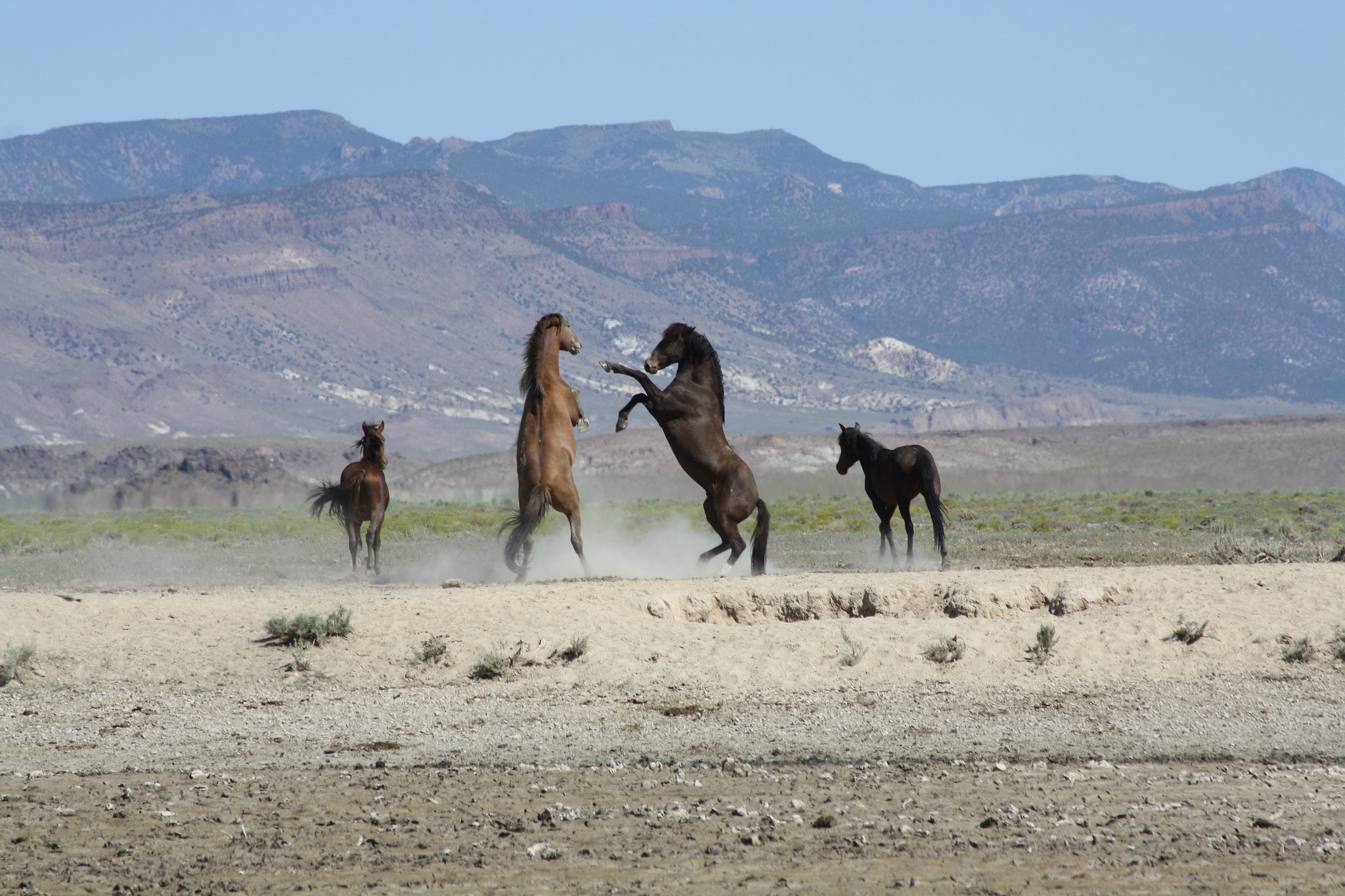Saving wild horses can save public lands

A uniquely American conversation concerns our wild horses and our federal public lands, which are a gift to us, affording public ownership of lands unlike anywhere else in the world. Our lands are supposed to be managed by balancing public interests, ecology and wildlife, permitting some private profiteering. Nevertheless, the wild horse and burro populations have experienced a staggering decline.
The history of the Bureau of Land Management (BLM) tells us a lot about its agenda. In 1934, came the Taylor Grazing Act when an estimated 150,000 wild horses roamed. The federal Grazing Service was established and became involved in regulating private livestock grazing on public land. Then came rangeland allotments and permits being issued to ranchers to try to stop deteriorating rangeland health. What ensued was the removal of 100,000 horses in just four years from Nevada ranges. The Grazing Service and General Land Office, which oversaw settlement of the West, were combined to form BLM in 1946. Wild horses on Western rangeland dwindled to 25,300 and were often sold for slaughter.
The 1971 Wild Free-Roaming Horses and BurrosAct was passed to protect horses and their habitats. As boundary lines were drawn on maps labeled “herd management areas,” BLM’s industrial roots collided with its new task of protecting wild horses. Wild horses are only allowed to live in these areas, yet industry grew (and grows) in these areas absent actions to lessen its impact.
BLM’s claim that wild horses are eating, reproducing, and damaging their areas, and that removing them is for their own good is not true. BLM’s vulnerability to powerful pressure on its decision-making by those who don’t take kindly to being regulated is clear. Oversight bodies – including the Government Accountability Office and National Academy of Sciences – have repeatedly rebuffed BLM’s data and analysis in setting the wild horse population goal so low.
Essential for the survival of wild horses are “Herd Management Area Plans” mandated by federal regulations. BLM has been promising for 40 years it would create these plans. Since 2020, Congress has been providing funding to BLM to create these plans for all herd management areas, 177, yet not one has been done.
The reality is that public lands hold valuable resources for the taking by private profiteers, while in the background and often ignored are voiceless animals, corruption by BLM, cronyism and a dismayed public. Why are we being told that wild horses are starving and have to be removed on the same range where forage for domestic cows and sheep is available? Near the infamous recent roundup of 2,000 horses from the Pancake Complex area near Ely, where abusive conduct was caught on video, private ranchers are allocated forage that allows about 60,000 of their livestock to graze our public lands, while 361-638 wild horses is the population range BLM has determined appropriate.
Livestock owners and BLM argue that their animals are confined to specific areas for specific time periods while wild horses are running free all year making them more impactful on the land. Not true. Of the 60,000-odd livestock animals mentioned above, 41,000 are allowed out and about all year. (Actual numbers are higher as illegal grazing is widespread.) In underlying paperwork BLM admits “grazing permits have not been recently reduced as a direct result of the overpopulation of wild horses.”
Federal regulations, which designate livestock use can be stopped to create habitat to maintain wild horse herds, are being ignored. Fences constructed to confine livestock confine horses in the worst way. Gates so that ranchers can allow livestock access to forage and water are also used to inhibit wild horses from access to the same forage and water, which, of course, they depend on to survive.
Wild horse herd management areas are further being sliced, diced and destroyed by mining. As mines go in, so do roads, fences and an excessive use of water. BLM uses the phrase “to restore a thriving natural ecological balance” as the stated reason for removing wild horses, but nowhere do we see that phrase used to limit profit-driven activity.
When mines appear, livestock is not reduced; only wild horses are reduced. And shouldn’t there be some kind of discussion about how much industry our public lands can handle before they collapse? Let’s consider the socioeconomics: Most mines bring a minimal amount of jobs to an area and most of them are transient. Mines may initially bring infrastructure, but they are later abandoned and collapse. This is the sad consequence of the boom-and-bust cycle.
Herd management area plans are required under federal regulations for all herds. If BLM would make the required plans, they could ensure the survival of wild horses and all the wild animals that share their habitats. Public lands are a gift to us. BLM should change its ways and help us properly secure our lands and wild horses that live on them for future generations.
Colette Kaluza volunteers for Wild Horse Education, a Nevada-based nonprofit that continues to fight for the First Amendment right to view roundups and against abuse. Her time at roundups is second only to the decade of documentation by organization founder Laura Leigh. Her video of the colt whose leg snapped while chased by a helicopter at the 2022 Pancake roundup spurred introduction of HR 6635 to stop large helicopter roundups.
